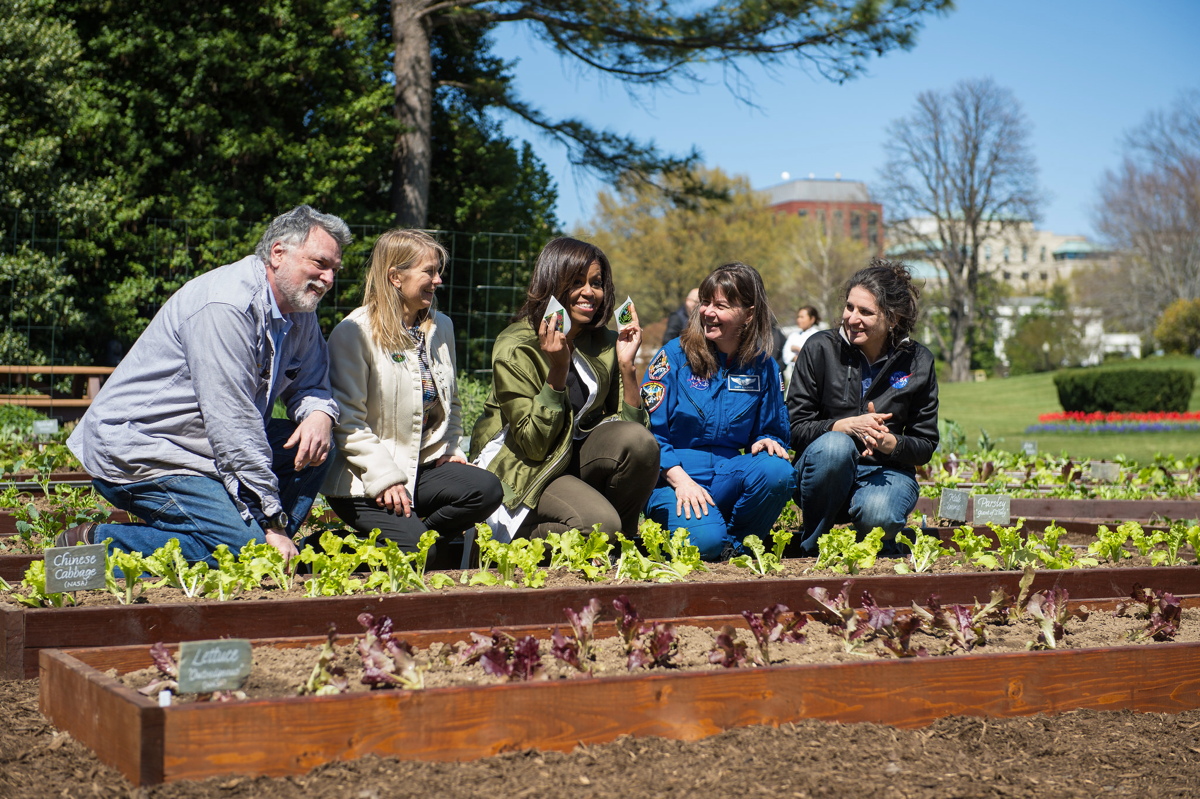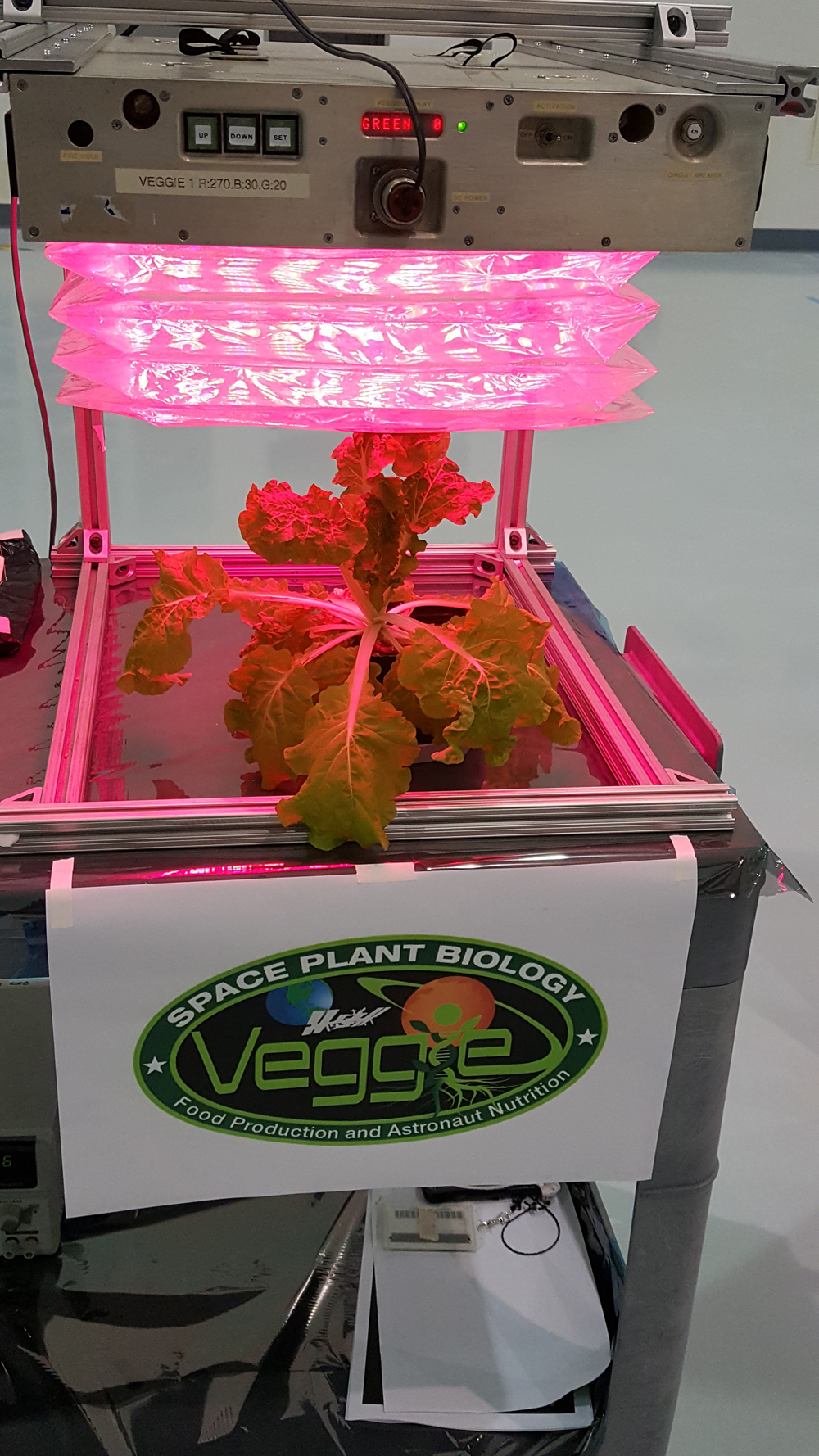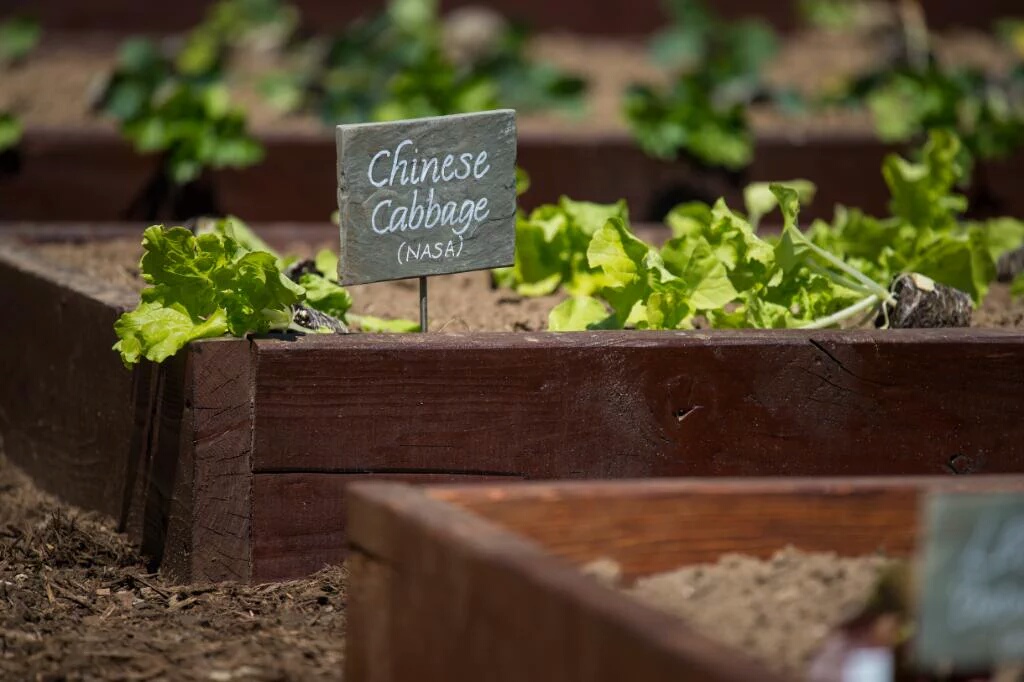Space-Bound Veggies Will Also Sprout in White House Garden

CAPE CANAVERAL, Fla. — A new batch of green-vegetable seeds launched to the International Space Station Friday (April 8) as part of an experiment to grow produce in space. Meanwhile, seeds from the same lot are taking root in Michelle Obama's White House kitchen garden.
The seeds are part of Veg-03, the third crop of plants to be grown in the station's Vegetable Production System (Veggie). This go-round, scientists are attempting to grow a variety of Chinese cabbage called Tokyo Bekana. The seeds launched to the station on a SpaceX Dragon cargo vehicle.
On April 5, Michelle Obama planted batches of the Chinese cabbage seeds, as well as red romaine lettuce (a previous space station crop) in the White House garden. The First Lady was joined by a group of students, as well as Gioia Massa, the science team lead for the Veg-03 experiment; NASA astronaut Cady Coleman; and NASA Associate Administrator Dava Newman. [Plants in Space: Photos by Gardening Astronauts]

The vegetable seeds were prepared for flight inside a laboratory at Kennedy Space Center's Space Station Processing Facility. A small batch of the seeds was shipped to the White House about a month ago, according to a statement from NASA. Diners in the White House will now be eating the same plants that the astronauts do.
In 2015, astronauts on the space station became the first humans to sample space-grown produce: red romaine lettuce, which was nicknamed "Outredgeous Lettuce," the statement said.
The Chinese cabbage was selected as the next space station crop based on a variety of factors, Veg-03 scientists said.
"This variety was selected because we did tests on how they grow, their nutrient value and how they taste," Massa explained during a pre-launch media briefing Thursday (April 7). "Testing in the food lab at Johnson Space Center showed this variety of leafy green was the best-growing and the best-tasting."
Get the Space.com Newsletter
Breaking space news, the latest updates on rocket launches, skywatching events and more!
The Veggie experiment has simple goals: provide the crew with fresh food and help boost morale. According to Massa, experiments like Veggie have enormous psychological benefits, since gardening can be a relaxing and social activity that can help unify the crew. Gardening can also help crewmembers feel connected to Earth, something they will miss on long duration missions.

Currently, fresh fruits and vegetables are rare treats on the station, as they must be shipped on re-supply missions and are typically consumed within the first week, the Veggie scientists told reporters. The ability to grow edible produce on station would change that.
However, before astronauts can enjoy a steady supply of salads, they have to tackle the issue of growing plants in microgravity. Leafy greens, like the red romaine and the Chinese cabbage, are hearty plants and are easier to grow than flowering plants. Massa explained that growing the plants in microgravity has not been without challenges. The first attempt to grow a crop of vegetables on the station faced watering issues, and several plants were lost due to drought-related stress. As a result, the next crop was monitored more closely, and the majority of the plants thrived. In space, water doesn't flow like it does on Earth, so one of the biggest hurdles has been the watering system, Massa told Space.com during a media tour of the Space Station Processing Facility at Kennedy Space Center.
In the Veggie unit, six individually sewn Teflon and Kevlar packages — called plant pillows —are housed within a special plant-growth chamber and contain the seeds, nutrients and watering system. The bulk of the water comes from passive watering via a special root mat underneath the pillows. Each is outfitted with a fabric bottom, and water is absorbed from the mat. The astronauts also have the ability to water the pillows directly. Nutrients are absorbed from a controlled-release fertilizer also housed in the pillow.
In December 2015, a batch of zinnias were grown on the station so scientists could study the growth of flowering plants as a precursor to potentially growing tomato plants on the station in the future, according to Matthew Mickens, a NASA plant biologist. Two weeks into the zinnia's growth cycle, an issue with the watering system resulted in a mold outbreak within the chamber. Delayed treatment resulted in the loss of three plants.
As a result of this, and at the urging of the astronauts, ground crews developed an autonomous gardening guide which will be tested on the cabbage. The autonomous gardening gives astronauts more control over the crops and allows astronauts to make decisions on watering without waiting for ground crews to give instructions. Massa said that this ability will be crucial during long-duration missions deeper into space, as communication delays increase.
"With each experiment, we are learning more about plants and fluids, as well as how to better operate between ground and station," Massa said.
Editor's note: This story was updated on April 10 to reflect the launch success of SpaceX's Dragon cargo ship carrying the new seeds for the Veggie plant experiment.
Follow us @Spacedotcom, Facebook and Google+. Original article on Space.com.
Join our Space Forums to keep talking space on the latest missions, night sky and more! And if you have a news tip, correction or comment, let us know at: community@space.com.

Amy Thompson is a Florida-based space and science journalist, who joined Space.com as a contributing writer in 2015. She's passionate about all things space and is a huge science and science-fiction geek. Star Wars is her favorite fandom, with that sassy little droid, R2D2 being her favorite. She studied science at the University of Florida, earning a degree in microbiology. Her work has also been published in Newsweek, VICE, Smithsonian, and many more. Now she chases rockets, writing about launches, commercial space, space station science, and everything in between.









